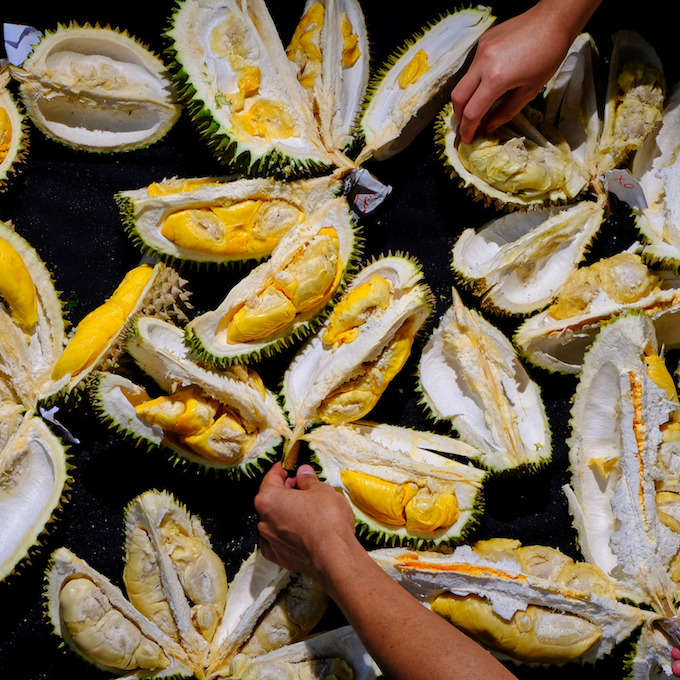Thai Fruit Photos: Mangosteen, Rambutan, Durian & More
Including one that's banned from public transportation
Whether you're in a city market or on the side of the road in rural Thailand, you're bound to come across an array of fruits that are marginally more difficult to come across stateside than an apple. Here are 15 common fruits you'll find in Thailand that are worth seeking out for both flavor and appearance.
Mangosteen
It tastes like honey and vanilla ice cream but looks like a bulb of garlic had a love affair with LSD, and is well deserving of the title "Queen of Fruits."
Sapodilla
The sapodilla looks underwhelming compared to other fruits on this list, but a dull appearance belies its soft, fig-like flesh that's reminiscent of brown sugar and pears.
Rose Apple
Shaped like a pear, but with the texture of an apple and a flavor similar to watermelon, rose apples are juicy with a satisfying crunch that's the perfect anecdote for hot Thai days.
Jackfruit
While not quite as pungent as durian, when jackfruit is around, your nose knows. A single jackfruit can weigh up to 100 pounds, and removing the edible pods is something akin to performing surgery.
Guava
Though guava is one of the most popular fruits in Thai markets and commonly sliced like an apple and dipped in a mixture of chili, salt, and sugar, it's not native to Thailand and is known as "farang," which is also the Thai word for Western foreigners.
Pomelo
The largest citrus fruit on the planet, pomelos can grow to the size of a basketball and taste like a slightly sweeter grapefruit with just a touch of bitterness.
Durian
Known as the "King of Fruits," durian is impossible to ignore thanks to a smell so pungent, it's banned in most hotels and on public transportation. Creamy and sweet but also curiously savory, durian is a love-it-or-hate-it fruit best suited for daring eaters.
Custard Apple
These ring true to their name—intensely sweet, almost buttery and best eaten with a spoon. Just be careful to avoid the plentiful, black seeds that hide in the creamy flesh.
Papaya
Though ripe, orange papayas can be found on American grocery store shelves, green, unripe papayas star in som tum, Thailand's famously delicious salad that combines tangy green papaya, dried shrimp, peanuts and chile.
Pitaya or Dragon Fruit
Despite its flamboyant exterior, dragon fruit's fuschia or white flesh is subtle, with just a hint of kiwi-like sweetness.
RELATED Hot Pink Pitaya Smoothie Bowl "
Tamarind
A vital ingredient in Thai cooking, tamarind ranges from sour to sweet. Sour varieties give Thai dishes their distinct sour flavor, while sweet varieties can be dried, peeled and eaten as a sweet snack.
Rambutan
Delightfully pink and hairy, these golf ball sized fruits are home to a firm, sweet fruit with a slightly acidic flavor that can be inhaled in mass quantities. Just watch out for the giant seed in the middle.
Langsat and Duku
While these two fruits are technically different, they are all classified as Lansium domesticum and share similar qualities. Both must be peeled, and boast a juicy, grape-like flesh that segments like an orange.
Kluay Khai
Don't let their size fool you. These mini bananas have more banana flavor than any variety found in an American grocery store and are firm enough to be used in Thai desserts without getting mushy.
Salak Fruit
Known as "snake fruit" thanks to its scaly exterior, salak fruit flesh is surprisingly complex—sweet like figs and honey with a hint of pineapple and an acidic, citrusy tang.
Brooke Siem is a writer and professional chef currently meandering around the world. Follow her on Instagram at @brookesiem.

